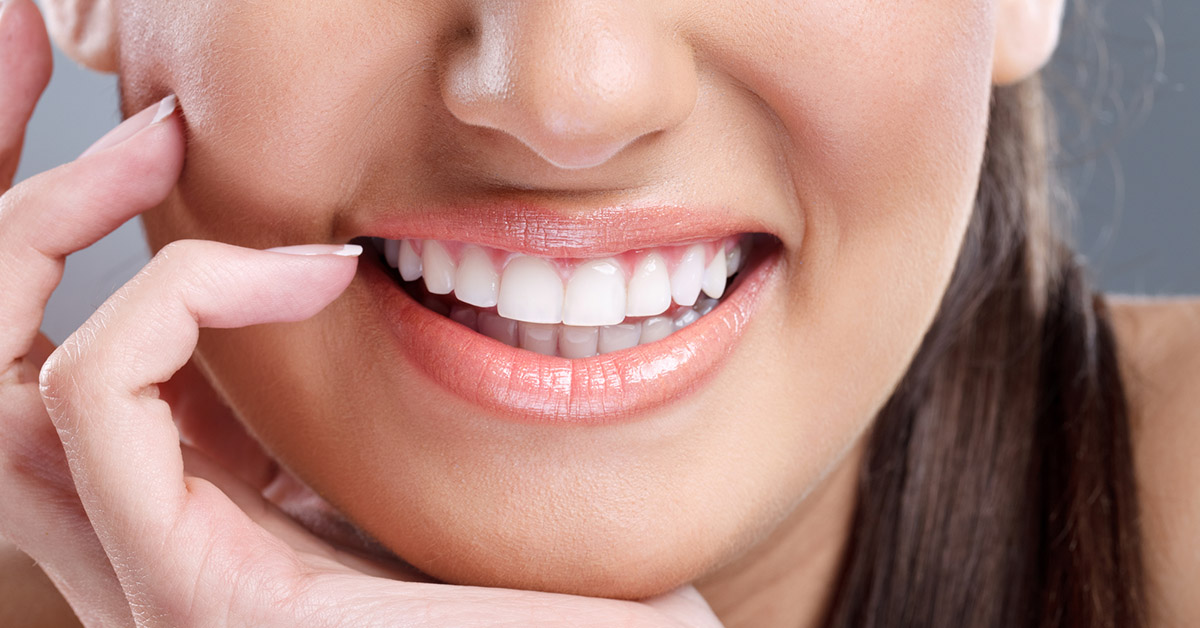Dental Crowns: Types and Benefits Explained
.png) |
| Dental Crowns |
Dental crowns are a versatile and effective solution for various dental issues. Whether you need to strengthen a damaged tooth, improve the appearance of a discolored tooth, or support a dental bridge, crowns can be an excellent option. In this article, we will delve into the types of dental crowns available and help you understand which one might be the best fit for your needs. Join 4smile as we take you through this journey of discovering the perfect dental crown for your smile.

What Are Dental Crowns?
Dental crowns, also known as caps, are prosthetic devices that are placed over damaged or decayed teeth. They are designed to restore the tooth’s shape, size, strength, and appearance. Crowns are a popular choice in restorative dentistry due to their durability and aesthetic appeal. Made from various materials, dental crowns can mimic the natural look of teeth, making them an ideal option for both front and back teeth.
The process of getting a dental crown typically involves two main steps: preparing the tooth and placing the crown. During the first visit, the dentist will remove any decay, shape the tooth, and take an impression to create a custom-fit crown. Once the crown is ready, it is cemented onto the prepared tooth, providing a protective and functional covering. This process ensures that the tooth is well-protected from further damage and can function like a natural tooth.
The Importance of Dental Crowns
Dental crowns play a crucial role in maintaining oral health and functionality. They are used to address a variety of dental issues, making them a versatile solution in restorative dentistry. Crowns can restore a tooth that has been severely damaged by decay, trauma, or wear and tear. By covering the damaged tooth, crowns prevent further deterioration and help maintain the integrity of the surrounding teeth.
In addition to their restorative benefits, dental crowns also offer significant aesthetic advantages. They can improve the appearance of discolored, misshapen, or poorly spaced teeth, contributing to a more attractive and harmonious smile. This is particularly important for front teeth, where appearance plays a vital role in one’s overall confidence and self-esteem.
Types of Dental Crowns
Ceramic Crowns
Ceramic crowns are made from porcelain-based materials and are known for their natural appearance. They are often used for restoring front teeth due to their ability to blend seamlessly with natural teeth. Ceramic crowns are highly biocompatible, meaning they are unlikely to cause allergic reactions or irritation to the gums.
One of the key advantages of ceramic crowns is their translucency, which mimics the light-reflecting properties of natural teeth. This makes them an excellent choice for patients seeking an aesthetically pleasing solution. However, ceramic crowns may not be as strong as metal-based crowns, making them less suitable for molars or teeth that endure heavy biting forces.
Porcelain-Fused-to-Metal Crowns
Porcelain-fused-to-metal (PFM) crowns combine the aesthetic benefits of porcelain with the strength of metal. These crowns have a metal base that provides durability and strength, while the outer layer of porcelain offers a natural tooth-like appearance. PFM crowns are versatile and can be used for both front and back teeth.
The metal core of PFM crowns ensures that they can withstand the pressures of chewing and biting, making them a durable option. However, over time, the metal may cause a dark line to appear along the gum line, which can affect the crown’s appearance. Despite this, PFM crowns remain a popular choice due to their balance of aesthetics and strength.
Gold Alloys Crowns
Gold alloy crowns are made from a combination of gold and other metals, such as copper and palladium. These crowns are highly durable and resistant to wear, making them an excellent choice for back teeth. Gold alloy crowns are also biocompatible and gentle on opposing teeth, reducing the risk of wear and tear on surrounding teeth.
While gold crowns are not as aesthetically pleasing as porcelain or ceramic crowns, they offer unmatched longevity and strength. Their malleability allows for a precise fit, ensuring maximum comfort and functionality. Gold crowns are often recommended for patients who prioritize durability over aesthetics, particularly for molars that endure significant biting forces.

Base Metal Alloys Crowns
Base metal alloy crowns are made from non-noble metals, such as nickel, chromium, and cobalt. These crowns are known for their strength and resistance to corrosion, making them a cost-effective option for dental restorations. Base metal alloy crowns require less removal of tooth structure compared to other types of crowns, preserving more of the natural tooth.
Although base metal alloy crowns are durable, they lack the aesthetic appeal of porcelain or ceramic crowns. They are typically used for back teeth where appearance is less of a concern. Patients with metal allergies should discuss alternative options with their dentist, as base metal alloy crowns may cause adverse reactions in some individuals.
Zirconia Crowns
Zirconia crowns are made from zirconium dioxide, a strong and durable ceramic material. These crowns are known for their exceptional strength, making them suitable for both front and back teeth. Zirconia crowns are biocompatible and resistant to wear, ensuring a long-lasting restoration.
One of the significant advantages of zirconia crowns is their ability to be color-matched to natural teeth, providing a highly aesthetic result. They are also less likely to cause allergic reactions or gum irritation. However, zirconia crowns can be more expensive than other types of crowns, reflecting their superior strength and aesthetic qualities.
Benefits of Dental Crowns
Dental crowns offer numerous benefits that contribute to both oral health and aesthetic improvement. One of the primary advantages is their ability to restore the function of damaged or weakened teeth. By providing a protective covering, crowns prevent further deterioration and allow patients to chew and speak comfortably.
Crowns also play a vital role in enhancing the appearance of teeth. They can cover discoloration, correct misshapen teeth, and fill gaps, resulting in a more attractive smile. This is particularly important for front teeth, where aesthetic considerations are paramount. Additionally, dental crowns can improve self-confidence and overall quality of life by addressing cosmetic concerns.
Another significant benefit of dental crowns is their durability. With proper care, crowns can last for many years, providing a long-term solution for dental issues. They are resistant to wear and can withstand the pressures of daily use, making them a reliable choice for restoring teeth.

How Dental Crowns Are Made
The process of making dental crowns involves several steps to ensure a precise fit and natural appearance. The first step is to take an impression of the prepared tooth, which serves as a mold for creating the custom crown. This impression is sent to a dental laboratory, where skilled technicians use it to fabricate the crown.
In the laboratory, the technician selects the appropriate material based on the dentist’s specifications and the patient’s needs. The material is then shaped and sculpted to match the natural contours of the tooth. Advanced techniques and technology, such as computer-aided design (CAD) and computer-aided manufacturing (CAM), are often used to achieve a high level of accuracy and detail.
Once the crown is fabricated, it undergoes a series of finishing processes, including polishing and glazing, to enhance its appearance and durability. The finished crown is then returned to the dentist, who checks the fit and makes any necessary adjustments before cementing it onto the prepared tooth. This meticulous process ensures that the crown fits comfortably and functions like a natural tooth.
The Dental Crown Procedure
The dental crown procedure typically involves two main appointments. During the first visit, the dentist prepares the tooth by removing any decay and shaping it to accommodate the crown. An impression of the prepared tooth is taken and sent to a dental laboratory to create the custom crown. In the meantime, a temporary crown is placed to protect the tooth.
Once the permanent crown is ready, the patient returns for the second appointment. The dentist removes the temporary crown and checks the fit of the permanent crown. Any necessary adjustments are made to ensure a comfortable fit and proper alignment. The crown is then cemented onto the prepared tooth using a dental adhesive, completing the restoration.
The entire procedure is typically painless, thanks to the use of local anesthesia. Patients may experience some sensitivity or discomfort after the procedure, but this usually subsides within a few days. Proper care and maintenance of the crown are essential to ensure its longevity and functionality.

Care and Maintenance of Dental Crowns
Proper care and maintenance are crucial to prolonging the life of dental crowns and ensuring their optimal performance. Patients should follow a consistent oral hygiene routine, including brushing and flossing, to prevent plaque buildup and maintain gum health. It is important to use a non-abrasive toothpaste and a soft-bristled toothbrush to avoid damaging the crown’s surface.
Regular dental check-ups and cleanings are essential for monitoring the condition of the crown and addressing any potential issues early on. Patients should also avoid chewing on hard objects, such as ice or pens, as this can cause the crown to crack or chip. Additionally, habits like grinding or clenching teeth should be addressed with the help of a dentist, as they can put excessive pressure on the crown.
Dietary habits can also impact the longevity of dental crowns. Patients should limit their consumption of sugary and acidic foods and beverages, as these can contribute to tooth decay and weaken the crown. Maintaining a balanced diet and staying hydrated can help support overall oral health and the durability of dental crowns.
Common Myths About Dental Crowns
There are several myths and misconceptions surrounding dental crowns that can cause unnecessary worry or confusion. One common myth is that getting a dental crown is a painful procedure. In reality, the process is typically painless, as local anesthesia is used to numb the area. Patients may experience some discomfort after the procedure, but this is usually mild and temporary.
Another myth is that dental crowns do not look natural. With advancements in dental materials and techniques, modern crowns can be made to closely match the color, shape, and translucency of natural teeth. This ensures a seamless and aesthetically pleasing result, especially for front teeth.
Some people believe that dental crowns are only for older adults or those with severe dental issues. However, crowns can be beneficial for patients of all ages with various dental concerns. Whether it’s to restore a damaged tooth, improve aesthetics, or support a dental bridge, crowns offer a versatile solution for maintaining oral health and functionality.

Potential Issues and Solutions with Dental Crowns
While dental crowns are a reliable and effective solution for many dental issues, they are not without potential problems. One common issue is crown sensitivity, which can occur when the crown is first placed or if it does not fit properly. This sensitivity can usually be managed with desensitizing toothpaste or adjustments to the crown’s fit.
Another potential problem is the crown becoming loose or falling off. This can happen due to improper cementation, trauma, or decay of the underlying tooth. If a crown becomes loose or detached, it is important to contact a dentist immediately to have it re-cemented or replaced. Proper oral hygiene and regular dental check-ups can help prevent this issue.
In some cases, the crown may crack or chip, especially if it is made from less durable materials. Small chips can sometimes be repaired with a dental bonding material, but larger cracks may require a new crown. Avoiding hard foods and habits like teeth grinding can help minimize the risk of damage to the crown.

FAQs
How long do dental crowns last?
Dental crowns can last between 10 to 15 years, or even longer with proper care and maintenance. Factors such as oral hygiene, dietary habits, and regular dental check-ups play a crucial role in the longevity of crowns.
Can I whiten my dental crown?
No, dental crowns cannot be whitened like natural teeth. If you are considering teeth whitening, it is important to do so before getting a crown. Your dentist can match the crown to the color of your whitened teeth.
Will my dental crown feel different from my natural teeth?
Initially, you may feel some difference as you get used to the crown. However, properly fitted crowns should feel comfortable and function like natural teeth. Any discomfort or fit issues should be addressed by your dentist.
Can I eat normally with a dental crown?
Yes, you can eat normally with a dental crown. However, it is advisable to avoid extremely hard or sticky foods that could damage the crown. Maintaining a balanced diet and good oral hygiene is essential for the longevity of the crown.
How do I know if I need a dental crown?
Your dentist will recommend a dental crown if you have a damaged, decayed, or weakened tooth that cannot be restored with a filling. Crowns are also used to improve the appearance of discolored or misshapen teeth and to support dental bridges.
Conclusion
Dental crowns are a versatile and effective solution for restoring damaged or decayed teeth and enhancing the overall appearance of your smile. With various types of crowns available, including ceramic, PFM, gold alloys, base metal alloys, and zirconia, you can choose the best option that meets your needs and preferences. At 4Smile, we are committed to helping you achieve a healthy and beautiful smile. Join 4smile and discover the benefits of dental crowns for yourself.
By understanding the different types of dental crowns and their benefits, you can make an informed decision about your oral health. Dental crowns not only provide a durable and long-lasting solution for damaged teeth but also offer significant aesthetic improvements. Proper care and maintenance, along with regular dental visits, will ensure that your crowns last for many years, allowing you to enjoy a confident and functional smile.



Comments
Post a Comment